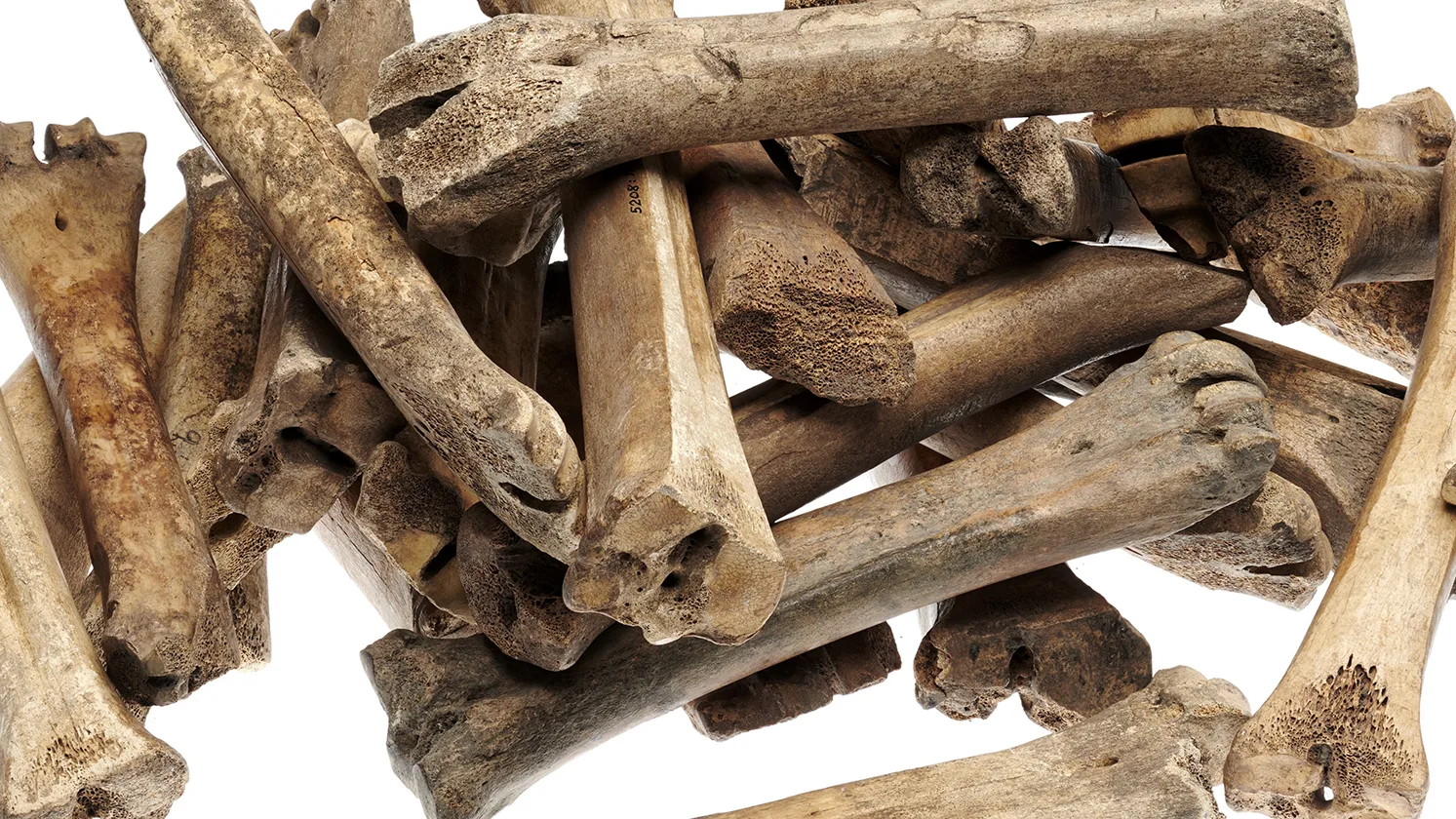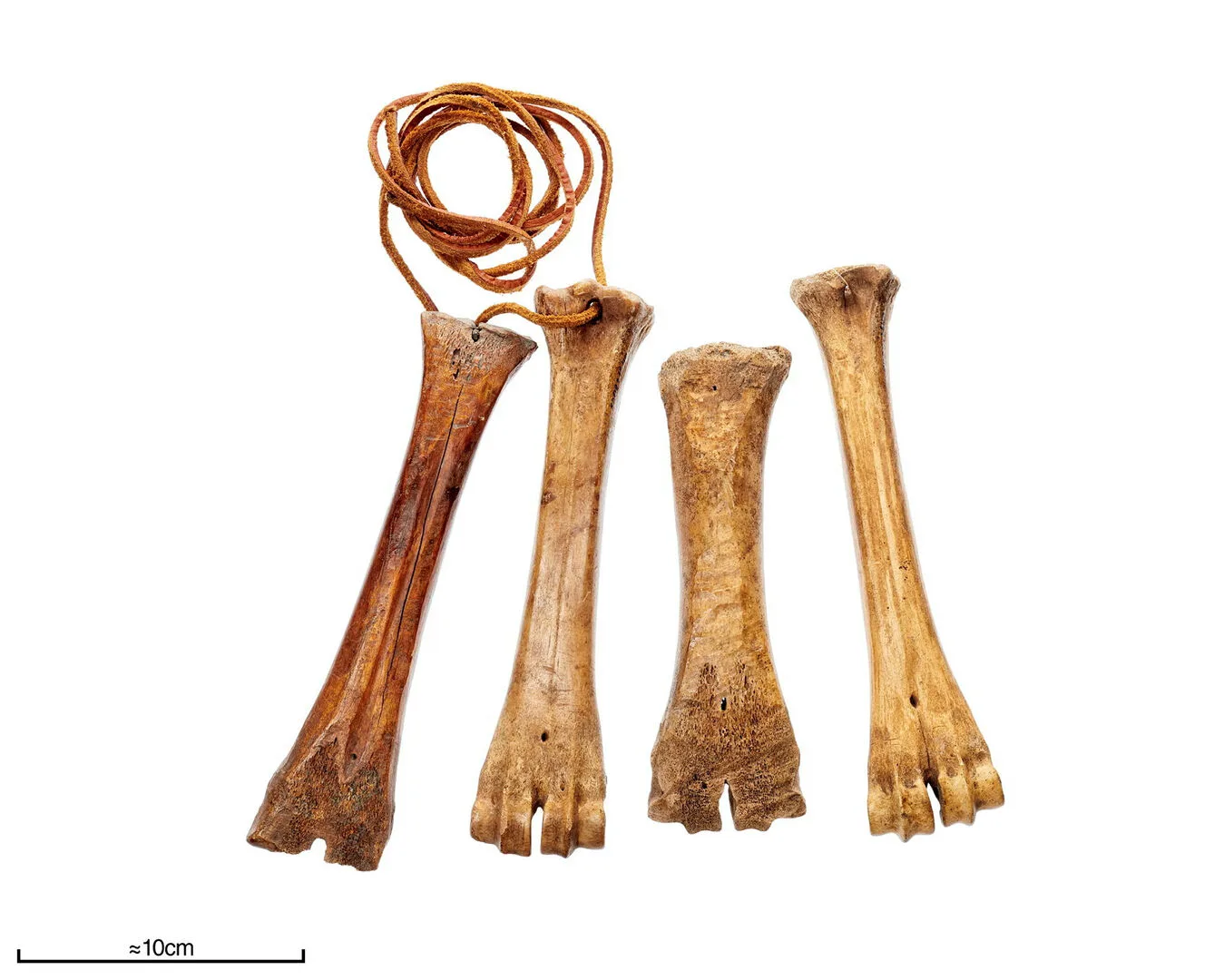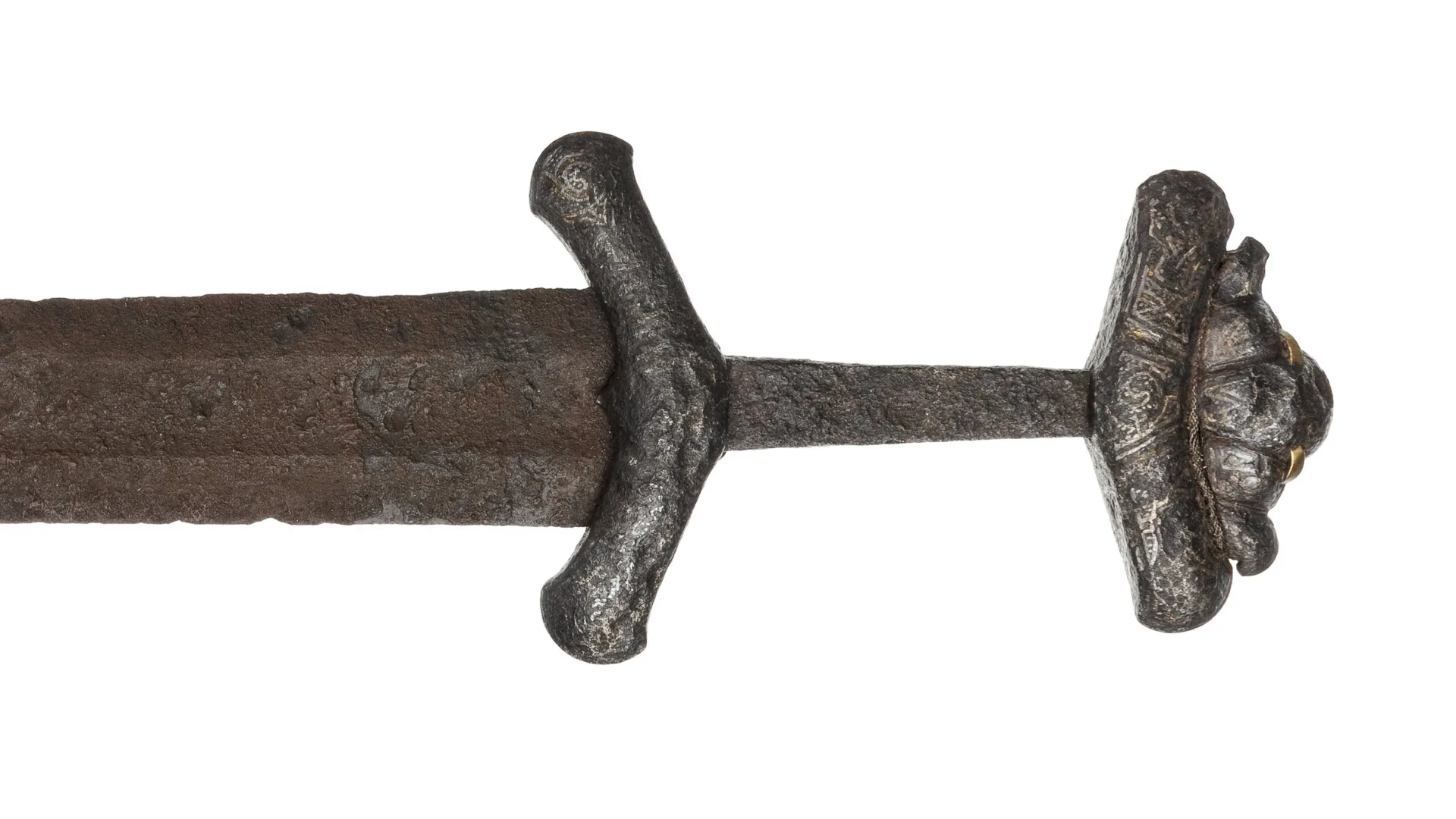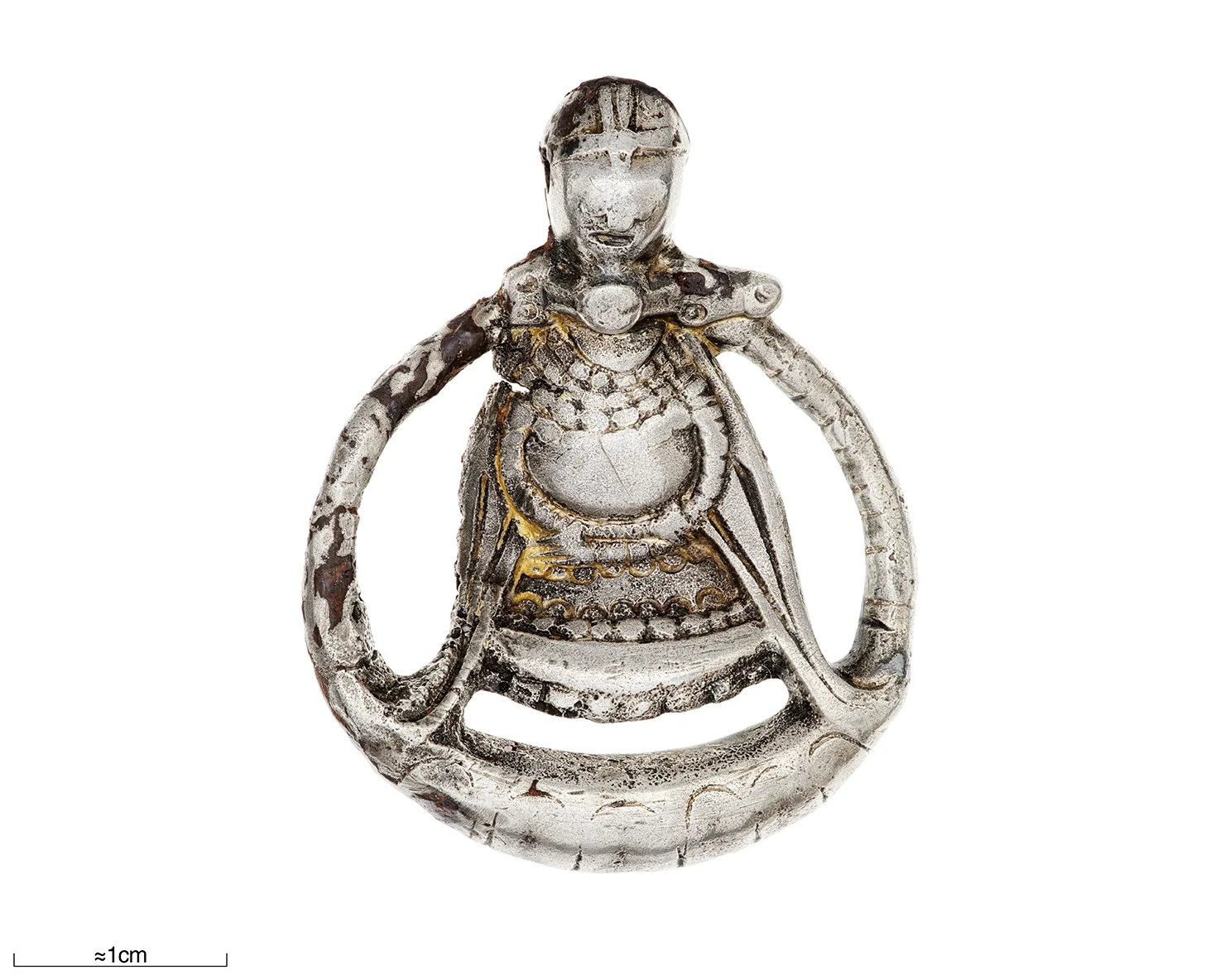Viking Age Ice Skates
Iron Age
500 BC – AD 1100
Viking Age
AD 800 – AD 1100
Middle Ages
AD 1050 – AD 1520

Although they were used in the Viking Age, bone skates became common during the Middle Ages. With the introduction of iron skates in the early 1600s, bone skates gradually fell out of use, though isolated evidence suggests they were still used as late as the 20th century.
Pig fat for speed
Bone skates were made from the metatarsal bones of horses or cattle. Their undersides were flat and polished to maximise speed. Rubbing pig fat on the bottom further reduced friction, allowing for even faster movement.
Well-crafted examples often had the front end shaped into an upward-slanting point, enabling the skater to pass over small obstacles without getting stuck. The top side could be left untouched or flattened. The key was to provide a broad surface to stand on.
Some bone skates have holes for foot straps at the toe and heel, allowing them to be tied on. But since the skater didn’t lift their feet, instead propelling themselves forward with an ice pole, fastening the skates wasn’t strictly necessary.

Viking Age ice skates
Bone skates found at Birka, Uppland.
On view at Historiska museet in the exhibition Vikingarnas världFind this object in display 34, Vikingarnas värld Monter 34
Bone skates were fast
In recent decades, several practical experiments with bone skates have been conducted. These show that even without much prior experience, one can achieve good speed. Then, as now, smooth ice made the journey easier.
The large number of bone skates found in archaeological excavations suggests they were widely used and popular. They come in many different sizes and were likely used by both children and adults.
That women also used bone skates is evidenced by a find from Ipswich, England. There, a female skeleton was discovered in clay, once a riverbed, with bone skates lying right beside it.
The idea of using bone fragments to travel across ice is found throughout the northern hemisphere. Climate naturally limits their geographic spread: in the south, mild temperatures mean ice rarely stays frozen long enough; further north, snow often arrives early, making skis a better option.





